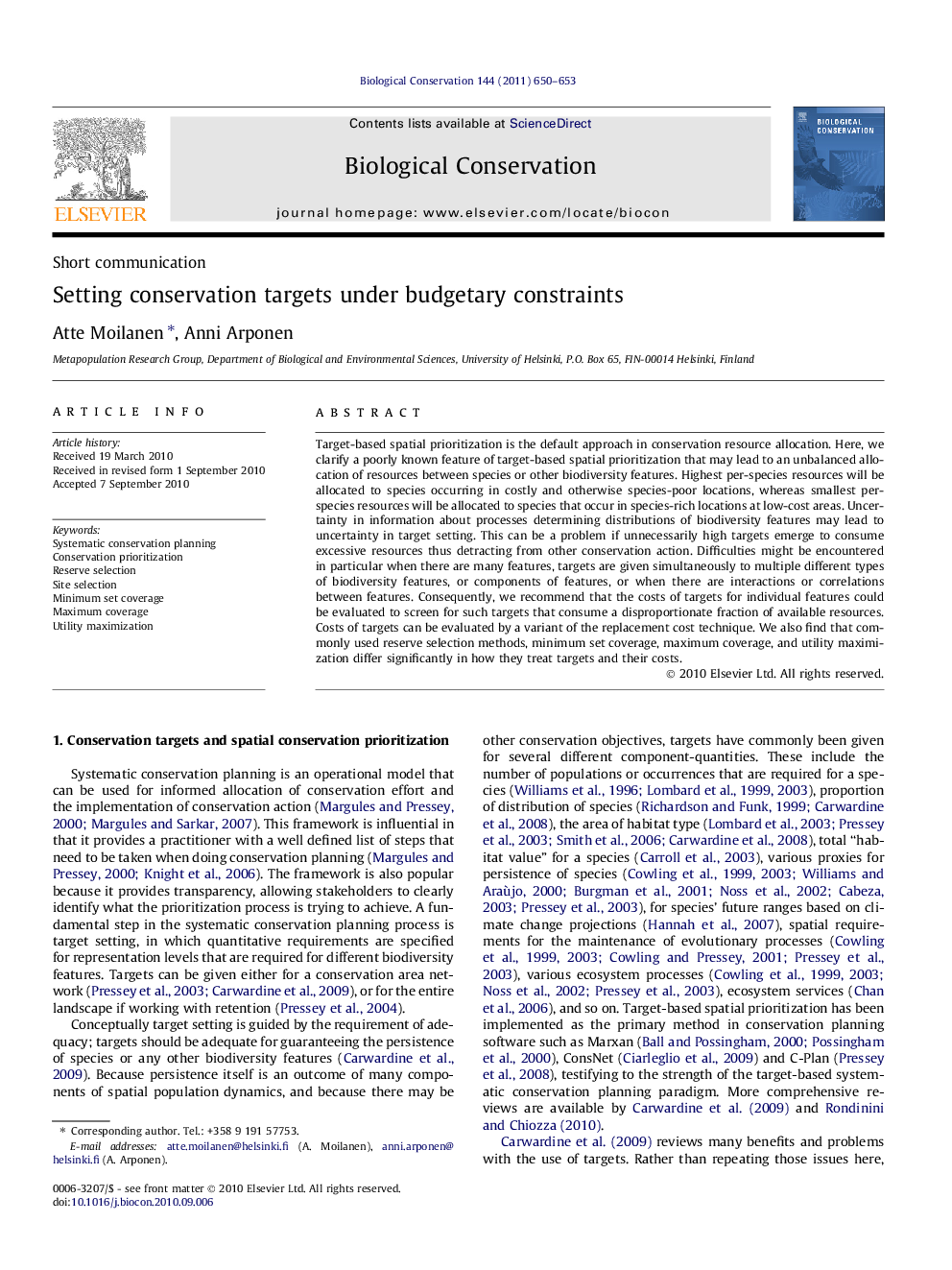| Article ID | Journal | Published Year | Pages | File Type |
|---|---|---|---|---|
| 4385729 | Biological Conservation | 2011 | 4 Pages |
Target-based spatial prioritization is the default approach in conservation resource allocation. Here, we clarify a poorly known feature of target-based spatial prioritization that may lead to an unbalanced allocation of resources between species or other biodiversity features. Highest per-species resources will be allocated to species occurring in costly and otherwise species-poor locations, whereas smallest per-species resources will be allocated to species that occur in species-rich locations at low-cost areas. Uncertainty in information about processes determining distributions of biodiversity features may lead to uncertainty in target setting. This can be a problem if unnecessarily high targets emerge to consume excessive resources thus detracting from other conservation action. Difficulties might be encountered in particular when there are many features, targets are given simultaneously to multiple different types of biodiversity features, or components of features, or when there are interactions or correlations between features. Consequently, we recommend that the costs of targets for individual features could be evaluated to screen for such targets that consume a disproportionate fraction of available resources. Costs of targets can be evaluated by a variant of the replacement cost technique. We also find that commonly used reserve selection methods, minimum set coverage, maximum coverage, and utility maximization differ significantly in how they treat targets and their costs.
